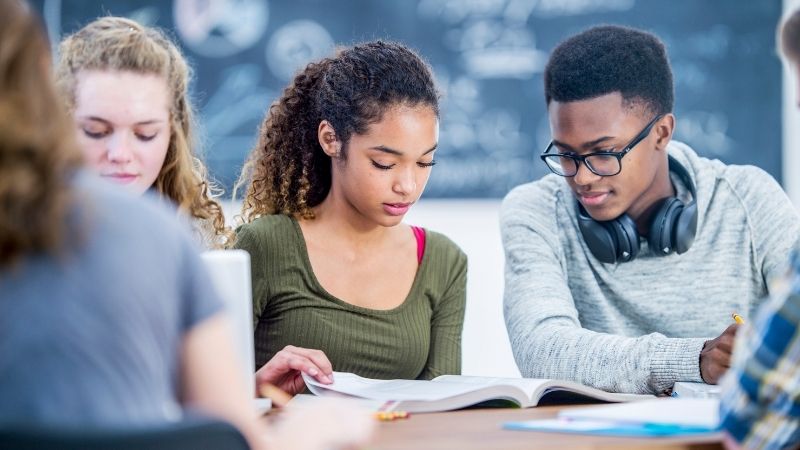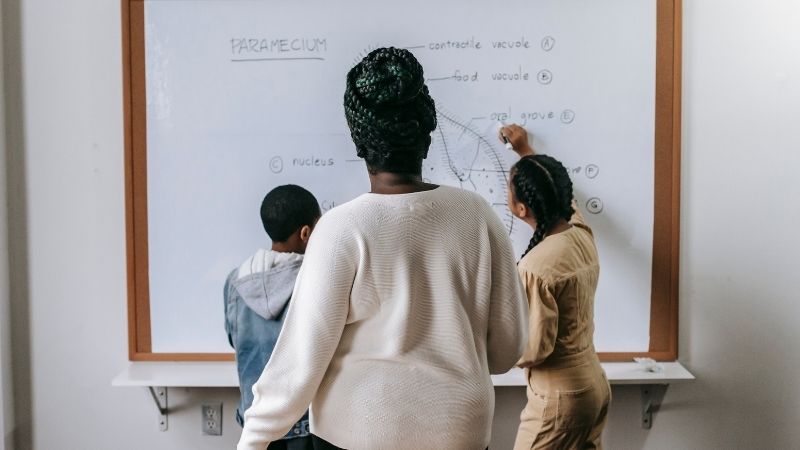
The field of special education encompasses various therapies and techniques aimed at facilitating sensory integration in individuals with sensory processing difficulties. This article aims to provide a comprehensive exploration of sensory integration, including an overview of different therapies, beneficial activities, essential tools, associated challenges, and winning techniques to implement.
By delving into the role of sensory integration in special education and offering strategies for successful implementation in the classroom, this article seeks to equip readers with knowledge and insights that can enhance their understanding and practice in this area.
Key Takeaways
- Sensory integration therapies in special education include proprioceptive input therapy, occupational therapy, cognitive-behavioral therapy, and sensory integration therapy for autism.
- Beneficial activities for enhancing sensory integration skills include play and movement, sensory play, gross motor movements, and fine motor movements.
- Essential tools for sensory integration therapy include weighted blankets or vests, therapy balls, swings, trampolines, vibrating cushions, noise-canceling headphones, textured toys or surfaces, and visual aids.
- Challenges associated with sensory integration in special education include sensory overload, sensory seeking behaviors, sensory discrimination difficulties, and impact on classroom participation.
Different Therapies for Sensory Integration in Special Education
Various therapies have been developed and implemented in special education settings to address sensory integration difficulties. One such therapy is the use of proprioceptive input, which involves engaging in activities that provide deep pressure to the muscles and joints. This can help individuals with sensory integration issues regulate their body awareness and coordination.
Another therapy commonly used is occupational therapy, which focuses on improving fine motor skills, self-regulation, and sensory processing through a variety of activities.
For individuals with ADHD, therapies such as cognitive-behavioral therapy (CBT) or behavioral interventions may be beneficial in addressing attention and impulse control difficulties.
In the case of autism, sensory integration therapy aims to improve sensory processing abilities by exposing individuals to various stimuli in a controlled manner.
Transitioning into the subsequent section about beneficial activities to enhance sensory integration skills, it is important to explore these therapies further as they contribute significantly to improving an individual's overall functioning and quality of life.

Beneficial Activities to Enhance Sensory Integration Skills
This discussion will focus on beneficial activities that can enhance sensory integration skills in individuals with special needs.
Play and movement are important components of sensory integration therapy, as they provide opportunities for children to engage their senses and develop coordination and body awareness.
Sensory exploration games can also be effective in promoting sensory integration by encouraging individuals to actively explore different textures, sounds, and movements.
Additionally, outdoor sensory experiences offer a unique opportunity for individuals to engage with nature and experience a wide range of sensory stimuli, such as the feel of grass or sand under their feet or the sound of birds chirping.
Play and Movement
Play and movement have been recognized as crucial components in sensory integration therapy for individuals with special needs. These activities provide opportunities for exploration, self-regulation, and the development of sensory processing skills. Sensory play engages multiple senses simultaneously, allowing individuals to make sense of their environment and develop a better understanding of their own bodies. Movement therapy, on the other hand, focuses on promoting physical coordination and body awareness through purposeful actions and exercises.
Sensory play: This type of play involves engaging with various materials that stimulate different senses, such as sand, water, or textured objects. It helps individuals develop sensory processing skills by exposing them to different textures, temperatures, sounds, and smells.
Gross motor movements: Activities like running, jumping, swinging, or climbing help improve balance and coordination while providing valuable proprioceptive input. They also promote body awareness and spatial orientation.

Fine motor movements: Engaging in activities that require precise hand-eye coordination such as drawing or manipulating small objects can enhance fine motor skills while stimulating tactile sensations.
Incorporating both sensory play and movement therapy into interventions for individuals with special needs can significantly support their overall development and sensory integration capabilities.
Sensory Exploration Games
Sensory exploration games provide individuals with special needs the opportunity to engage in activities that stimulate multiple senses and promote sensory integration. These games involve various interactive experiences that target different sensory modalities, such as touch, sight, sound, smell, and taste.
Sensory play is a vital component of special education as it helps individuals develop their sensory processing skills and enhance their overall cognitive, social, and emotional development. These games often utilize materials like textured objects, musical instruments, scented items, and tactile surfaces to create a rich sensory experience.
Outdoor Sensory Experiences
Outdoor environments provide individuals with special needs the opportunity to engage in sensory experiences that promote exploration and stimulate multiple senses. Nature therapy, also known as ecotherapy or green therapy, is a form of treatment that utilizes outdoor settings to improve mental, emotional, and physical well-being.
Outdoor play in natural surroundings offers numerous benefits for individuals with special needs:
Enhanced sensory integration: The varied textures, sights, sounds, and smells found in nature help individuals develop their sensory processing skills.

Improved motor skills: Outdoor activities such as climbing trees or navigating uneven terrain can enhance balance, coordination, and strength.
Reduced stress and anxiety: Spending time in natural settings has been shown to lower cortisol levels and promote relaxation and calmness.
Engaging in outdoor sensory experiences allows individuals with special needs the freedom to explore their environment while promoting overall development and well-being.
One important aspect of sensory integration therapy is the utilization of specialized equipment and tools to facilitate the development of sensory processing skills in individuals with special needs. Sensory integration tools and equipment are designed to provide specific sensory input, such as tactile, auditory, visual, or proprioceptive stimulation. These tools aim to regulate and organize sensory information for individuals who struggle with sensory processing difficulties.
There is a wide range of sensory integration tools available that cater to individual needs and preferences. Some common examples include weighted blankets or vests, therapy balls, swings, trampolines, vibrating cushions, noise-canceling headphones, textured toys or surfaces, and visual aids like timers or visual schedules. These tools can be used in various therapeutic settings such as schools, clinics, or at home.
When selecting appropriate sensory integration tools and equipment for therapy sessions, it is essential to consider the individual's specific needs and goals. The therapist should assess each person's sensory profile to determine which type of tool would best address their challenges. Additionally, it is important to ensure safety measures are in place while using these devices to prevent any potential harm or accidents.
Overall, incorporating specialized sensory integration tools into therapy sessions can significantly enhance an individual's ability to process and respond appropriately to various stimuli. By providing targeted input through these tools and equipment during therapy sessions consistently over time, individuals with special needs can improve their overall sensory processing skills and enhance their daily functioning abilities.

Challenges Associated With Sensory Integration in Special Education
Sensory integration challenges are commonly observed in special education settings, where individuals with sensory processing difficulties struggle to effectively process and integrate sensory information from their environment. These challenges can significantly impact a student's ability to participate in classroom activities and hinder their overall learning experience.
The following three key challenges associated with sensory integration in special education are:
Sensory overload: Students may become overwhelmed by excessive or intense sensory stimuli, leading to heightened anxiety, irritability, or even meltdowns.
Sensory seeking behaviors: Some students may engage in repetitive or self-stimulatory behaviors as a way to regulate their sensory input, such as rocking back and forth or spinning in circles.
Sensory discrimination difficulties: Individuals may have difficulty accurately perceiving and interpreting sensory information, making it challenging for them to differentiate between similar sensations or understand spatial relationships.
Understanding these challenges is crucial for educators and therapists working with individuals with sensory processing difficulties as they develop strategies and interventions that promote optimal functioning and participation in the educational setting.
Winning Techniques to Implement Sensory Integration Therapy
This discussion will focus on effective sensory integration, successful therapy techniques, and implementing sensory integration.

Effective sensory integration involves the ability to process and integrate information from various senses in a coordinated manner.
Successful therapy techniques for sensory integration often include activities that provide opportunities for individuals to engage with different stimuli and develop their sensory processing skills.
Implementing sensory integration therapy requires careful planning, individualized approaches, and collaboration between therapists, educators, and other professionals involved in the individual's care.
Effective Sensory Integration
Effective sensory integration plays a crucial role in promoting the overall development and well-being of individuals with sensory processing difficulties. It involves the ability to process and integrate information from the senses, enabling individuals to respond appropriately to their environment.
To achieve effective sensory integration, various strategies and techniques can be implemented:
Sensory diets: These are individually tailored schedules or routines that provide a range of sensory experiences throughout the day. They may include activities such as swinging, jumping, deep pressure touch, or auditory stimulation.
Environmental modifications: Creating an environment that is conducive to sensory integration can greatly benefit individuals with sensory processing difficulties. This may involve reducing sensory distractions, providing appropriate lighting and seating options, or using visual supports.

Therapeutic interventions: Occupational therapy sessions focusing on specific sensory integration techniques can help individuals develop skills in organizing and interpreting sensory information effectively.
Successful Therapy Techniques
Successful therapy techniques for individuals with sensory processing difficulties involve implementing strategies and interventions that target the integration and interpretation of sensory information. These therapy techniques aim to improve sensory processing abilities, which can enhance an individual's overall functioning and quality of life.
Effective strategies utilized in therapy include sensory diets, which are personalized plans that provide a variety of sensory experiences to help regulate the individual's responses to stimuli. Other successful techniques incorporate activities such as deep pressure touch, vestibular stimulation, and proprioceptive input. By providing structured and repetitive opportunities for the individual to engage with different types of sensory input, therapists can support the development of efficient sensory integration skills. Additionally, therapists may employ tools such as weighted blankets or fidget toys to promote self-regulation during challenging situations.
Implementing these therapy techniques allows individuals with sensory processing difficulties to better navigate their environment and participate more fully in daily activities.
Transition: Now that we have explored successful therapy techniques for individuals with sensory processing difficulties, it is important to discuss how these techniques are implemented in practice and how they contribute to the overall goal of integrating sensory information effectively.
Implementing Sensory Integration?
The implementation of sensory integration techniques in therapy for individuals with sensory processing difficulties involves the careful selection and systematic use of strategies and interventions that target the integration and interpretation of sensory information.
To effectively implement sensory integration, therapists often incorporate sensory diets, which are personalized schedules of activities designed to provide specific types and amounts of sensory input. These diets may include a combination of calming activities (such as deep pressure massage or rocking) and alerting activities (such as bouncing on a therapy ball or engaging in vigorous movement).

Additionally, therapists may utilize various sensory integration activities, such as swinging, spinning, or playing with tactile materials, to help individuals regulate their responses to different sensations. Overall, the goal is to promote adaptive responses to sensory stimuli and enhance participation in daily activities.
This approach plays a crucial role in special education as it helps individuals with sensory processing difficulties overcome challenges related to their unique sensory needs.
Transition: With an understanding of the implementation of sensory integration techniques, it is important to explore the broader role that these interventions play in special education settings.
The Role of Sensory Integration in Special Education
One of the key components in special education is the incorporation of sensory integration techniques. Sensory integration refers to the ability to take in and process sensory information from our surroundings. In individuals with special needs, such as autism or developmental delays, sensory processing can be challenging. Therefore, a sensory diet is often implemented as part of their educational plan.
A sensory diet consists of activities and strategies designed to provide the necessary sensory input for optimal functioning. This may include activities that stimulate different senses such as touch, movement, sight, sound, and smell. By incorporating a variety of sensory experiences into their daily routine, students with special needs can improve their overall attention span, emotional regulation, and learning abilities.
Sensory integration techniques play a crucial role in enhancing the educational experience for these individuals by addressing their unique sensory processing challenges.
Strategies for Successful Sensory Integration in the Classroom
Strategies for effective sensory integration in the classroom involve implementing evidence-based practices and incorporating a range of activities that support optimal sensory processing in individuals with special needs. These strategies can help create a supportive environment that promotes learning and reduces sensory overload.

Classroom accommodations: Modifying the physical environment, such as reducing visual clutter or providing noise-canceling headphones, can help minimize distractions and promote focus.
Sensory breaks: Incorporating regular breaks throughout the day allows students to regulate their sensory input and recharge. These breaks may include activities like deep pressure exercises, swinging, or engaging in calming sensory experiences.
Individualized plans: Developing individualized plans based on each student's specific sensory needs allows for targeted interventions. This may involve working closely with occupational therapists to identify appropriate strategies and accommodations for each student.
Frequently Asked Questions
How Does Sensory Integration Therapy Differ From Other Therapies Used in Special Education?
Sensory integration therapy differs from other therapies used in special education by focusing on the integration of sensory input to improve a child's ability to process and respond to sensory stimuli, which can result in improved attention, behavior, and academic performance.
Are There Any Specific Activities That Can Help Improve Sensory Integration Skills in Children With Special Needs?
Activities that target sensory integration skills in children with special needs can be beneficial. For example, sensory integration activities for children with autism focus on promoting self-regulation and social interaction, while sensory integration therapy has shown benefits for children with ADHD in improving attention and reducing hyperactivity.
Essential tools and equipment used in sensory integration therapy include weighted blankets, therapy balls, tactile toys, and vibrating cushions. These tools provide sensory input and help individuals with special needs regulate their sensory systems for improved functioning and participation in daily activities.
What Are Some Common Challenges That Teachers and Students Face When Implementing Sensory Integration in Special Education?
Common challenges in implementing sensory integration in special education include limited resources, lack of training, and difficulty incorporating it into the curriculum. Strategies for success involve collaboration among teachers, ongoing professional development, and adapting activities to meet individual student needs.

Are There Any Specific Techniques or Strategies That Have Been Proven Effective in Sensory Integration Therapy?
Evidence-based strategies in sensory integration therapy include deep pressure techniques, vestibular stimulation, and proprioceptive input. These techniques have shown effectiveness in improving sensory processing abilities and reducing challenges faced by individuals with special education needs.
 Careers in EducationElementary EducationHigh School EducationEducational TechnologyTeaching StrategiesSpecial EducationPrivacy PolicyTerms And Conditions
Careers in EducationElementary EducationHigh School EducationEducational TechnologyTeaching StrategiesSpecial EducationPrivacy PolicyTerms And Conditions
